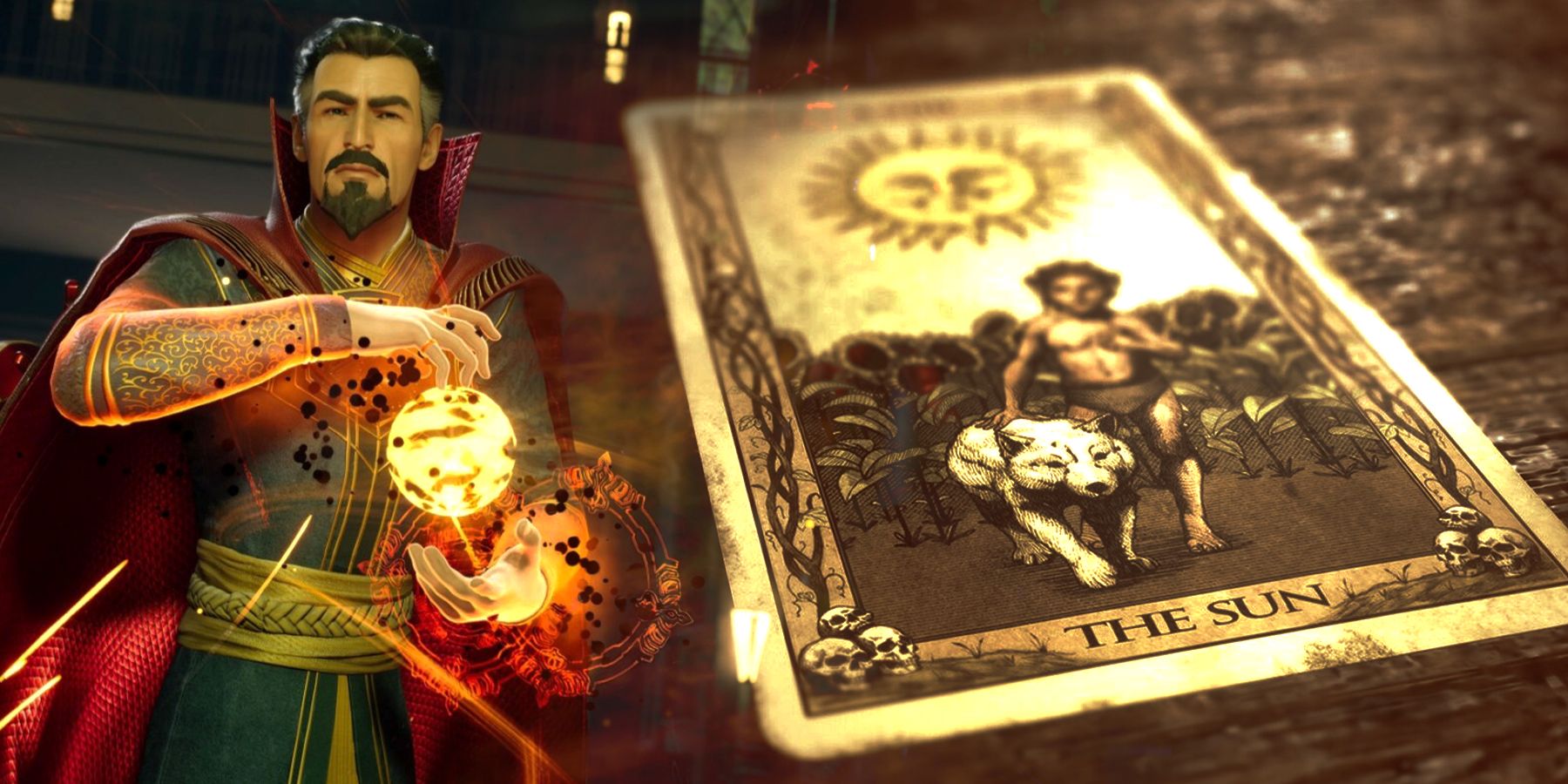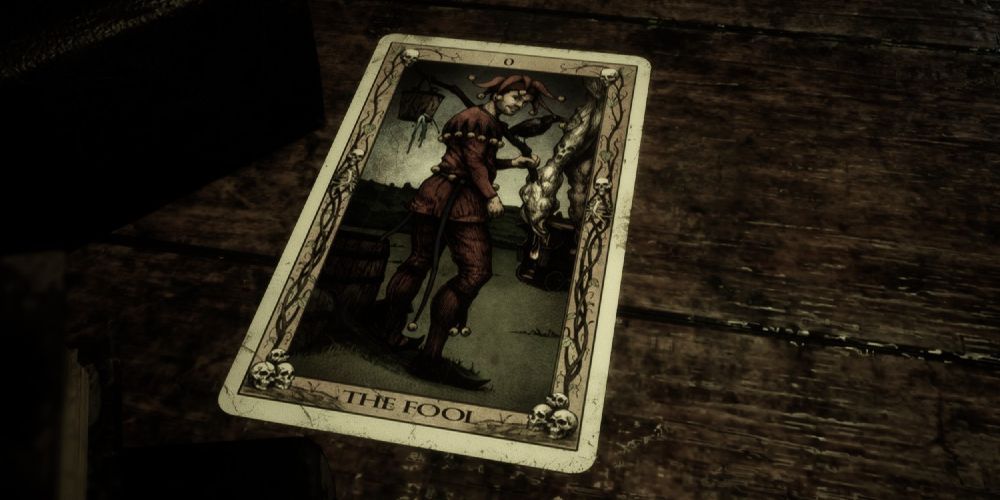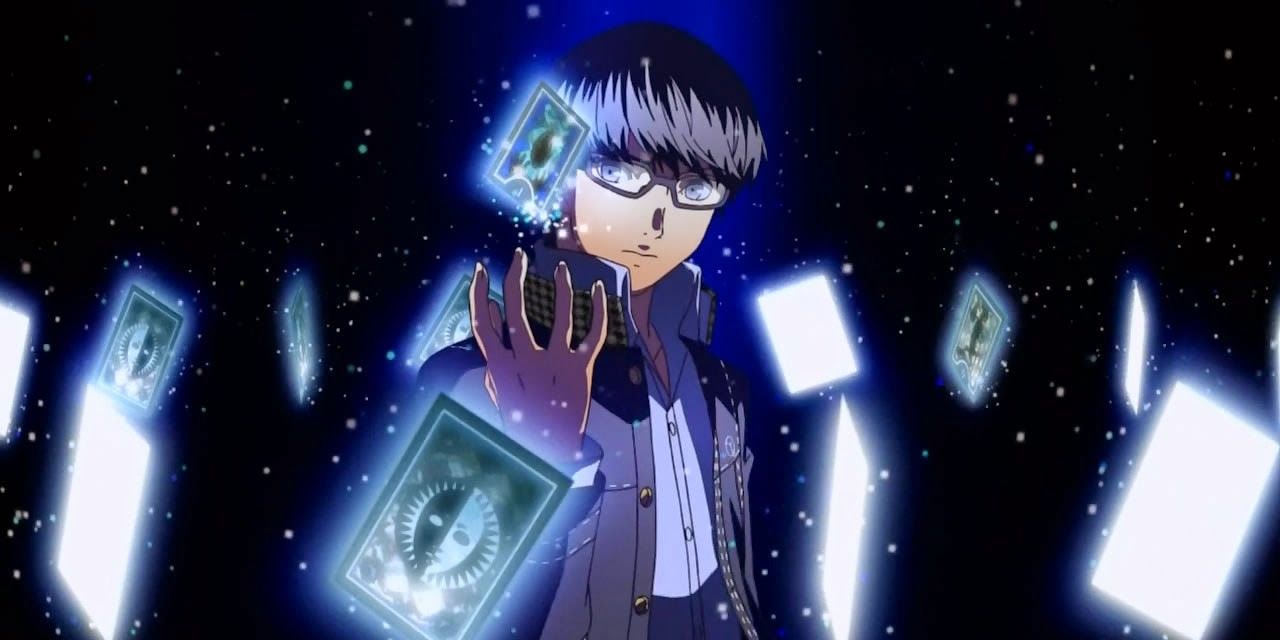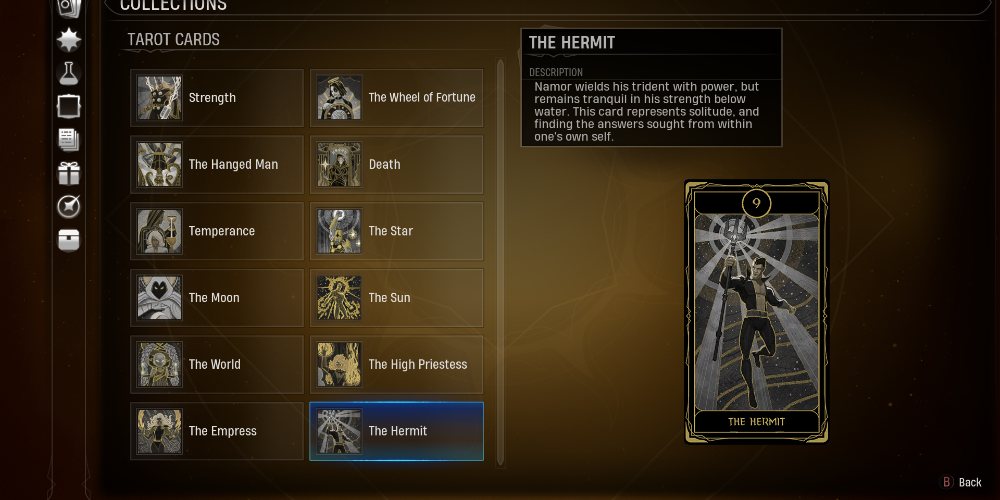The recently released Marvel's Midnight Suns has plenty of secrets for players to uncover, with 22 collectible tarot cards being among the most obvious. Scattered across the Abbey are cards for each of the Major Arcana that depict different Marvel heroes and locations. As most of the heroes featured on the cards are not in the game, these can be seen as simply a nice way of incorporating more of the vast Marvel Universe, but Midnight Suns is far from the only game to incorporate tarot cards -- especially in recent years.
Tarot cards and Major Arcana references are nothing new in gaming. 1995's Tactics Ogre used tarot cards as random drops that provide buffs, and 1997's Curse of Monkey Island features a deck and a fortune-teller who predicts Guybrush Threepwood's fate and uses tarot cards to provide chapter summaries. Perhaps most famously, the Persona games are built around a tarot motif in which each Persona and most major characters are associated with one of the Major Arcana. Still, these references seem to be getting more and more prevalent, with games like The Quarry, Cult of the Lamb, and Sayonara Wild Hearts incorporating tarot in their own ways, which shouldn't be too surprising considering how flexible tarot is as a motif.
The Fool's Journey Mirrors Common Storytelling Tropes
While specifics vary between iterations and regions, tarot decks are composed of 22 Major Arcana and 56 Minor Arcana cards. Similar to regular playing cards, the Minor Arcana are split into four suits, typically wands, swords, cups, and coins. Different decks have historically been used for card games and fortune-telling, with the latter being what most modern audiences associate tarot with. By asking a question and drawing cards in various spreads, the user can interpret them to try and gain insight into the past, present, or future. Though generally associated with the occult, tarot has expanded its reach, with more and more people looking to it as a resource for personal growth. It's no surprise, then, that tarot and Major Arcana motifs have made their way into popular media such as video games.
One major reason tarot cards (especially the Major Arcana) function so well as a motif is because they tell a story: the Fool's Journey. Echoing the classic Hero's Journey, the Major Arcana represent stages of an individual's journey from the innocence and naivety of the Fool to the enlightenment of the World. Each Arcana has something to teach the Fool as they overcome challenges and make major decisions, whether that's learning societal rules and customs from the Emperor and Hierophant, facing their own dark side with the Devil, overcoming sudden and painful change with the Tower, and finding self-forgiveness and a higher purpose with Judgment.
The Persona series in particular runs with this idea. While early Persona games featured the Arcana in place of Shin Megami Tensei's demon races, from Persona 3 on, the protagonists are generally associated with the Fool (whose unlimited potential matches the series' Wild Card), and the games end with the hero obtaining the World (or Universe) Arcana. Each character with a Social Link or Confidant corresponds to an Arcana -- such as the nurturing Empress Haru Okumura and the hopeful and loving Teddie -- and progressing through these helps the Fool move forward on their journey.
Indie game Sayonara Wild Hearts does something similar. The rhythm action game presents players with a playable album of sorts where each track depicts one of the Major Arcana. Though the game's story is largely left up to interpretation, it is a tale of a young woman's heartbreak during which she seems to make peace with her pain and learns how to move forward.
The Major Arcana Serve as a Helpful Shorthand
Sayonara Wild Hearts serves as a perfect example of how tarot can add depth to a story (particularly an abstract one). None of the game's characters are actually named, but the Arcana provides a decent idea of who they may be without taking away the player's ability to interpret the story and its major figures for themselves. Even those unfamiliar with the intricacies of tarot can come up with some idea of what each Major Arcana means based on their names and the imagery featured on the cards.
The format and tropes of tarot leave plenty of room for variety. After all, tarot cards are meant to be interpreted in context; two readings may both feature the same card, but factors like the position, spread, and other cards can drastically change the meaning. The same is true of characters associated with the same Arcana. For example, Persona's Kenji Tomochika, Junpei Iori, Yosuke Hanumura, and Morgana all belong to the Magician Arcana (as does Doctor Doom in Midnight Suns), but while they all possess some similar qualities, each is a distinct character who fits the Magician in their own way.
Tarot card art can also enhance a game's story and worldbuilding, such as in Dragon Age: Inquisition. The game includes tarot cards depicting the Inquisitor's companions and advisors on loading and selection screens, with the artwork on companion cards changing based on whether the player has completed their personal quest, if they are in a romance with them, and important choices made during the story. The artwork functions as a clear, dynamic way for the game to show players how they've impacted the game's world and what their choices mean for their companions.
Tarot Cards Are Collectibles Players Can Identify With
With this understanding of tarot cards and Major Arcana motifs, the fact that an increasing number of video games are using them as collectibles makes a lot of sense. For one, cards are an easy thing to scatter throughout a game world to encourage exploration. Beyond that, though, assigning characters to the Major Arcana the way Persona and Midnight Suns does replicates a long-running fandom hobby.
Just as fans identify with things like Hogwarts Houses, Dungeons & Dragons alignments, and MBTI personality types and enjoy assigning these to their friends and favorite characters, they can do the same with tarot cards. As with the other examples, there's typically no "right" answer, allowing fans to debate which Arcana best fits the individual in question. It's also a perfect subject for fanart, with plenty of fan-made deck designs existing, some of which have even been printed and sold.
While it may not currently be as pervasive as Houses, alignments, or personality types, the Major Arcana's flexibility as a storytelling tool and shorthand for familiar tropes makes tarot a perfect fit for gaming. Tarot cards have become increasingly popular (in part thanks to exposure from games like Persona), and as they enter the mainstream consciousness, their use in video games is likely to grow.




